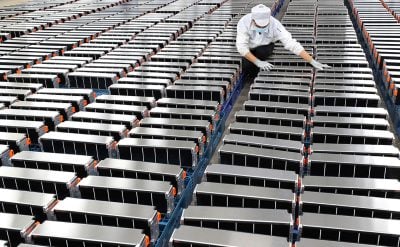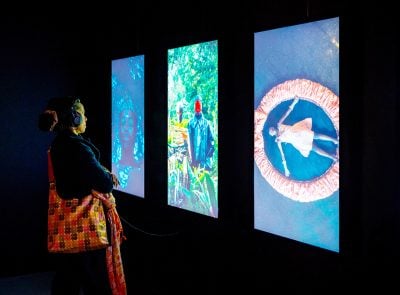Zambia’s economic performance over the last few years, under the rule of the MMD party, has been exceptional, with virtually all sectors recording growth and a strong infrastructural foundation being laid. However, says Nawa Mutumweno from Lusaka, the benefits have yet to trickle down to the common man. Can the new government under President Sata build on the previous success and deliver to the population at large?
Although the Movement for Multiparty Democracy (MMD) lost power to Michael Sata’s Patriotic Front following the general and Presidential elections last September, its track record on the economy has been impressive.
During its final years at the helm, the country maintained the inflation level at a single-digit figure, posted GDP growth of between 6% and 7% and enhanced foreign direct investment (FDI). Zambia recorded a trade surplus of ZMK7.95 trillion ($1.52bn); from January to November 2011, investment pledges were over $4.6bn.
Another milestone was being assigned a B+ sovereign rating by Fitch and Standard & Poor’s (S&P), which is expected to reduce the cost of borrowing significantly.
Having deferred plans to seek a credit rating and selling its first global bond of $1bn in 2009 due to the world financial downturn, Zambia is poised to proceed with offloading a $700m bond – up from the initial figure of $500m.
This intervention is expected to significantly reduce the cost of borrowing both for the public and private sectors. Through the issuance of a US dollar bond, Zambia will realise the financing of more development projects while the private sector, especially mining firms, will borrow at a low cost to finance huge projects.
The 2011 Doing Business Report by the World Bank ranked Zambia among the top 10 global economies that have improved the process of doing business. Zambia also attained the lower middle-income status, positioning it steadfastly towards becoming a middle-income country as promulgated in its Vision 2030.
Another feather in its cap was Zambia’s ranking third in the Foreign Private Capital (FPC) programme which aims at tracking the economic developments in the region under the auspices of the Macroeconomic and Financial Management Institute of Eastern and Southern Africa.
Mining
The country’s number-one sector recorded increased production and expanded exploration works during the year under review.
First Quantum Minerals (FQM), co-owners of Kansanshi Mine, injected a $1bn investment into a new mammoth project, Trident, in northwestern Zambia. Another major development was the $8bn purchase of Lumwana Mine by Barrick Gold from Equinox Minerals while Vale Mining of Brazil indicated its intention to inject $90m into the Konkola North Copper Mine (KONNOCO) project, a joint venture with African Rainbow Minerals, expected to commence copper production in 2013 and operate at full capacity in 2015.
The mining firms paid a colossal ZMK1 trillion ($192m) in various taxes, which was partly channelled to road rehabilitation and other construction works.
Manufacturing
The centrepiece of this growing sector was Zambia’s hosting of the African Growth and Opportunity Act (AGOA) in June last year where about $250m worth of deals in joint venture partnerships were wrapped up cutting across various sectors – agriculture (including agro processing), construction and manufacturing.
“The sector has grown by 2–3%. There has been a substantial number of new investments such as metal and steel fabrication,” observes Zambia Association of Manufacturers (ZAM) chief executive officer Roseta Mwape. Other areas that have seen growth are cement production, following the expansion by Lafarge Cement and increased production from other players, and foods and beverage.
The cost of doing business remains a glaring challenge. There is an urgent need to revamp the textile, gemstone and leather industries. Policy interventions should also be put in place to back commerce, trade and industry.
Tourism and aviation
“We are hoping to attract 1m visitors this year because on average, the arrivals are 825,000 with each tourist spending about $200 and staying between two to three days,” Zambia Tourism Board (ZTB) chairperson Timothy Mushibwe said.
However, the high cost of aviation fuel impacted negatively on the aviation industry. 2011 saw the collapse of Zambezi Airlines, following the suspension of its operating licence due to poor safety standards.
Positive developments in the sector include the commencement of flights into Zambia by KLM Royal Dutch Airlines and Emirates.
The National Airport Corporation introduced aviation security charges to both departing local and international passengers in a bid to enhance security at Kenneth Kaunda International Airport.
Banking and finance
During the year, most of the banks increased their loan portfolio and branch networks while others signed a number of loan syndication with mining firms to finance huge projects and facilitate the purchase of equipment and machinery.
All the commercial banks reduced their interest rates following the move by the central bank, Bank of Zambia (BoZ), slashing the statutory reserve ratio to 5% from 8%, an intervention that will release an additional $134m to commercial banks for onward lending to the private sector and push lending rates downwards in line with a Presidential directive.
“This is what we have always been calling for and it has finally been done. We are passing the benefits to our customers,” said Bankers Association of Zambia (BAZ) president Mizinga Melu.
There was only one new entrant on the commercial bank stage, AB Bank of Germany, which specialises in small and medium enterprises (SMEs) financing, bringing the number of banks to 19.
Agriculture and telecoms
The Farmer Input Support Programme (FISP), coupled with favourable weather patterns, has helped the country record maize bumper harvests for two consecutive years. This has resulted in the price of the staple food, maize meal, reducing marginally. Wheat, cotton and tobacco also performed successfully although tobacco experienced a downward fall in prices in comparison to the previous year.
“The farming fraternity delivered in 2011 and all things being equal, there is cause for optimism on the expected outcome in 2012. This is premised on past performance and making assumptions for the future,” Zambia National Farmers Union (ZNFU) president Jervis Zimba said.
In the telecoms sector, the three mobile service providers – Airtel, MTN and Zamtel – have scored tremendous success, particularly with the 3G technology which has been rolled out in a number of sites, especially in rural areas.
Construction
The industry has posted impressive growth in the recent past, including last year, which recorded a 13% growth. The year saw major road projects, valued at $576m and multimillion-dollar modern structures. The construction of the $200m Levy Business Park and the Zambia National Building Society’s (ZNBS) redevelopment of Society House in the capital’s central business district (CBD) at a cost of about $100m are some of the projects worthy of note which have changed Lusaka’s landscape.
Major expansion works were concluded at the country’s premier shopping mall, Manda Hill, in Lusaka while the South African retail chain, Pick n Pay invested millions of dollars in top-class stores that have made shopping a pleasure.
Energy
The government in conjunction with ZESCO Limited, kick-started a number of mini hydropower projects, namely Lunzua, Shiwang’andu, Lusiwasi, Chishimba and Musonda, to reduce the increasing power outages in the country.
Major power projects include Kariba North Bank Extension with 360MW to be completed this year and Itezhi Tezhi Hydropower Project (120MW) to be finalised in February 2015. The 750MW Kafue Gorge Lower project, which is a widely anticipated undertaking not only in Zambia but in the Southern African Power Pool (SAPP), is poised to provide the much-needed relief to the power deficit that has afflicted this part of the continent and turn Zambia into a regional power hub.
Education and health
Both the education and health sectors witnessed unprecedented developments resulting in schools, clinics and hospitals being constructed countrywide.
Clinics were constructed and upgraded to referral hospitals to decongest the major facilities in the country. In Lusaka, the Levy Mwanawasa General Hospital was constructed while a private hospital, Fairview, was built at a cost of $40.2m, creating about 180 direct jobs.
However, this the superb economic delivery has not permeated to small-scale entrepreneurs and the ordinary populace. This should be the new Patriotic Front government’s preoccupation if it is to persuade the electorate into re-electing them beyond 2016 when their term expires.
Want to continue reading? Subscribe today.
You've read all your free articles for this month! Subscribe now to enjoy full access to our content.
Digital Monthly
£8.00 / month
Receive full unlimited access to our articles, opinions, podcasts and more.
Digital Yearly
£70.00 / year
Our best value offer - save £26 and gain access to all of our digital content for an entire year!
 Sign in with Google
Sign in with Google 


